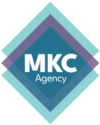Prefer to listen? Check it out on BuzzSprout
Lately, the sales community has been exploding regarding various lead generation methods. Email has gotten a bad wrap as the result of spammy, unpersonalized drivel in decision-makers inboxes. It doesn’t have to be that way. Every SDR wants to know how to craft the perfect cold email, so I decided to put together this comprehensive guide on cold emailing that I wish I had when I first started reaching out to potential buyers.
1) Figure Out Who Is Important
The person you’re emailing is likely busy, so it’s essential to try and figure out who will be most important in your cold email. It may be worth researching each of these people—then using that personalization when you write your emails. One of my favorite sayings is, “When you market to everyone, you market to no one.” It’s the same with your outbound. Define the persona of the person you are trying to reach. If you don’t understand their pain points and objectives, you can’t possibly speak to them. How are you going to hook someone you don’t know anything about?
2) Explain Why They Would Care
No one wants their time wasted. They especially don’t want to be bombarded with unsolicited sales pitches. If you open your email with something irrelevant or uninteresting, they’ll just hit delete before you can even get started. So make sure your subject line is worth opening. Why would someone care? Explain why it matters and how it relates to them directly, as if they are an old friend who owes you money.
3) Personalize It
Personalization is not:
“Dear <first name>,
Seeing as you are <role> at <company> I thought you might be interested in <product/service>”
Personalization is:
- spending 2 mins researching your prospect to find a relevant article or talking point
- speaking to their specific problems or frustrations
- mapping your solution to their DLO (director level objective)
- finding a way to make your prospect the hero (what’s going to make them look good to their boss)
- sharing some of your personality in your emails
4) Write Good Subject Lines
The first thing a prospect will see when opening your email is your from line. Make sure it’s professional and recognizable, like your name or company name. It should be short and to the point so that it leaves room for a compelling subject line.
- Consider the prospect’s point of view – think what kind of advantage your subject line guarantees to the prospect. What’s in it for them if they open your email email? Does it solve their needs or appeal to their curiosity? Make it about them, not about you.
- Personalize it – again; the subject line is not the place for self-promotion. Prove to the addressee that you planned to contact them. It would be best if you could assure them you’re not some spammer who sends myriads of identical emails to people and waits to see what gets a response.
- Intrigue them – don’t spill the beans immediately. Pique their interest. Captivate them by getting them to reflect on a problem they may have. Or try using a bit of flattery to catch their attention.
- Be human – you’re writing to a living and breathing human, and thus, you shouldn’t turn into a bot. Avoid sounding ‘salesy’ or overly formal. Your subject line should possess a casual, friendly, natural feel. If this isn’t natural for you, try to imagine you’re addressing a specific person you know, for example, a colleague you like.
- Make it relevant– no bait and switch or clickbait subject lines. Make sure it’s relevant to what you’re about to write. A good trick can be to write the email first and then go back to add the subject.
5.) Update Your “From” Line
The from line is one of your cold email’s most critical elements, and too many people overlook it. If you’re having trouble getting a response (or any response) from your cold emails, look at what you’ve written in that from line first. People are far more likely to read and reply to an email if they know whom it’s coming from and why.
Here are some basic examples
A. First name (Megan)
B. First name + Last name (Megan Killion)
C. First name + Last name, Title (Megan Killion, CEO & Founder)
D. First name + Company name (Megan at Megan Killion Consulting)
E. First name + Last name + Company name (Megan Killion at Megan Killion Consulting)
I use: Megan Killion, Marketing Consultant (it’s pretty clear what I’m about to chat them up about)
6.) Add a Clear CTA
Your email must have a clear CTA. Think about your audience and what they want. Give them what they want by providing value and driving them towards your desired outcome (i.e., signing up for your email list, purchasing from you, etc.). Here are some examples:
- Book a meeting here
- View the case study here
- Would it be okay for me to share the case study?
- Can I share more information?
- Reply if this is a problem you’re encountering
- Is there someone else I should be talking to about this?
- Share your phone number, and I’ll give you a call about _______
- Visit our site to learn more
- Sign up for our _____ webinar to learn more about ______
Ultimately, most people are not excited to receive cold emails, but if you are open about who you are, provide value and give them the option to unsubscribe, you are doing things right. Results come with time and practice. Keep A/B testing your messaging to see what is connecting—got questions? Send me an email: megan@megankillion.com.

